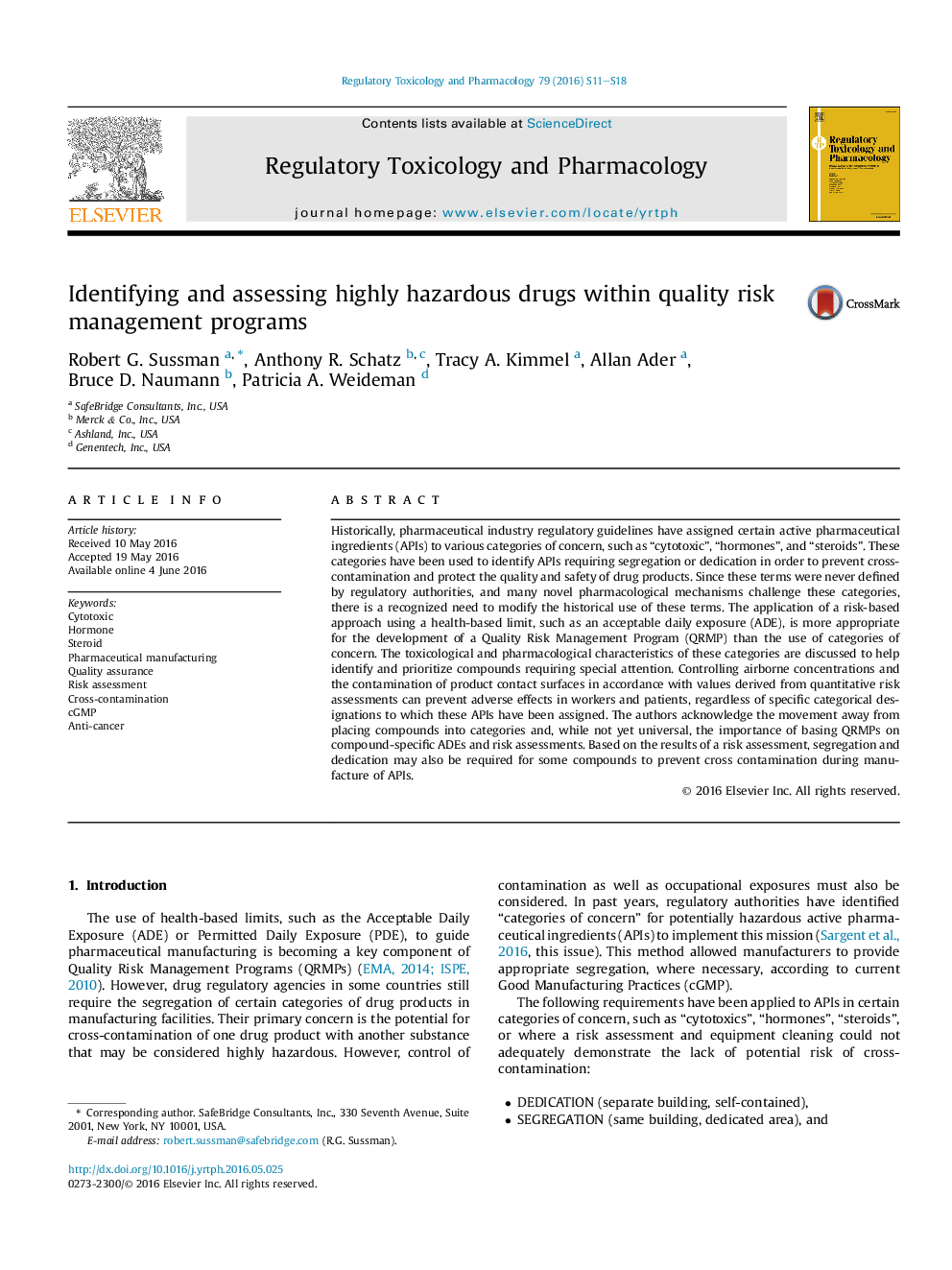| Article ID | Journal | Published Year | Pages | File Type |
|---|---|---|---|---|
| 2592276 | Regulatory Toxicology and Pharmacology | 2016 | 8 Pages |
•Categorizing pharmaceuticals by mechanism (cytotoxic, hormone, etc.) should not determine their need for segregation.•Quantitative health-based assessments should replace that practice.•Some regulatory agencies have adapted their approach to accept this concept.•Until all agencies have adopted this approach, this paper identifies key characteristics of several of these categories.
Historically, pharmaceutical industry regulatory guidelines have assigned certain active pharmaceutical ingredients (APIs) to various categories of concern, such as “cytotoxic”, “hormones”, and “steroids”. These categories have been used to identify APIs requiring segregation or dedication in order to prevent cross-contamination and protect the quality and safety of drug products. Since these terms were never defined by regulatory authorities, and many novel pharmacological mechanisms challenge these categories, there is a recognized need to modify the historical use of these terms. The application of a risk-based approach using a health-based limit, such as an acceptable daily exposure (ADE), is more appropriate for the development of a Quality Risk Management Program (QRMP) than the use of categories of concern. The toxicological and pharmacological characteristics of these categories are discussed to help identify and prioritize compounds requiring special attention. Controlling airborne concentrations and the contamination of product contact surfaces in accordance with values derived from quantitative risk assessments can prevent adverse effects in workers and patients, regardless of specific categorical designations to which these APIs have been assigned. The authors acknowledge the movement away from placing compounds into categories and, while not yet universal, the importance of basing QRMPs on compound-specific ADEs and risk assessments. Based on the results of a risk assessment, segregation and dedication may also be required for some compounds to prevent cross contamination during manufacture of APIs.
